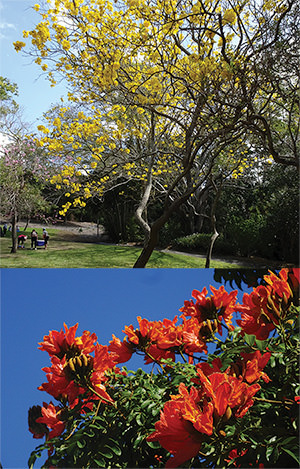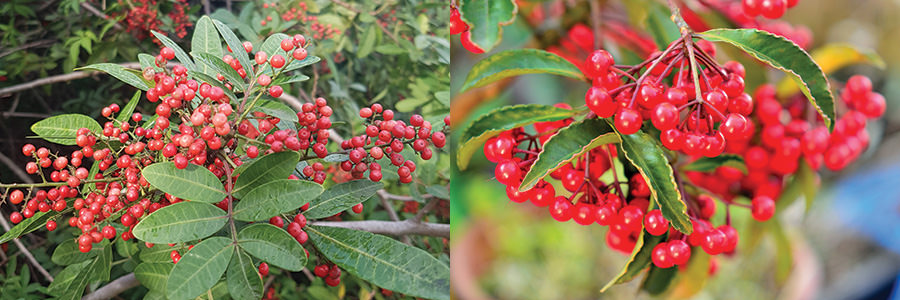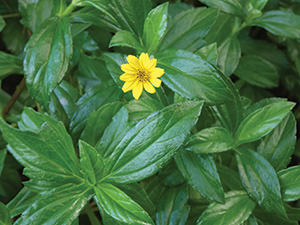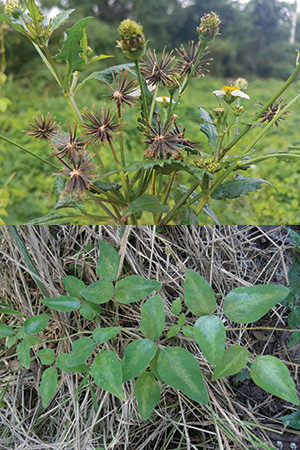
Many Land for Wildlife members not only love the bush but are also avid gardeners. For those of us that live in a bushland setting, our gardens grow immediately adjacent to the forest. It brings great joy to see bush birds venture into our gardens where we can observe them at close range and feel comfort in the fact that we are providing them with a habitat where they can safely access the resources they require. Native critters of all types visit our gardens to access the bounty of well watered and plump produce laid on. On many properties the boundary between the garden and the bush easily becomes blurred as the two blend seamlessly into each other…or do they?
When we plant something new in our gardens we are effectively introducing something new into the local ecosystem. After all, a garden is not a closed system. A new plant with small fleshy fruits will soon be discovered by fruit-eating birds and bats, which in turn fly away with the seed inside them and deposit it (with a squirt of fertiliser) in the nearby bushland. This is exactly how some environmental weeds such as Coral Berry (Ardisia crenata) and Broad-leaved Pepper Tree (Schinus terebinthifolius) have become established.
As part of my role in identifying threats to the natural values found on Land for Wildlife properties, I sometimes sheepishly point out to the landholder a known bushland weed growing in pride of place in their garden. Occasionally the response I receive is, “I will just keep an eye on it and make sure it doesn’t get away”. But the thing is, many of these plants persist in the environment much longer than we do. We have all visited the site of an old farmhouse where the original inhabitants are long-gone, the original dwelling is all but a few bricks, however some of the original garden plants (think Mother-of-Millions) are still thriving and have spread throughout the surrounding landscape. The worst of the garden escapees have evolved dispersal methods that not even a Trumpesque garden border will stop.

Many weeds produce abundant fleshy fruits, enticing birds and bats to disperse the seeds far and wide. Broad-leaved Pepper (above left) and Coral Berry (above right) fall into this category.
The first group of escape artists are the high fliers which sail away, high above the border, like a carefree hang-glider using the power of wind and riding the thermal uplifts far over the horizon. Popular flowering trees such as the Golden Trumpet (Handroanthus chryotrichus syn. Tabebuia chrysotricha) and African Tulip (Spathodea campanulata spp. nilotica) fall into this category. Once their seed pods open, the seeds are specifically adapted to drift away on the breeze to naturalise in a new land.
Another group of specialised escapees keen on a long voyage are the water weeds. Aquatic weeds such as Salvinia (Salvinia molesta) and Water Lettuce (Pistia stratiotes), just to name a couple, may start life as an innocent addition to a well-intended frog pond. During a torrential downpour they see their opportunity and are soon sailing downstream and celebrating their escape to a new life of opportunity in the neighbour’s dam. Here they will establish and generations of their progeny will continue the family tradition of dispersal and colonising new water bodies right through the catchment.
Some of these escapees simply spread via vegetative growth, that is, when left unchecked they just continue growing. Vines and groundcovers are the best at this. In high rainfall areas climbing plants such as Syngonium, planted to get that ‘tropical’ look will climb up and over every tree in reach until it creates its own exotic jungle at the expense of all the natives it smothers.

These weeds will happily break off stems or leaves and let them wash away to set up shop in new locations. The groundcover, Creeping Inch Weed (main banner) and Singapore Daisy (above) regularly use this technique to propagate.
Meanwhile on the forest floor, shade tolerant ground covers such as Creeping Inch Weed (Callisia repens) will even sacrifice a limb. They make their escape via overland flows and hop away in search of new understoreys in which to replenish, dominate and conquer.
Animals and gardeners are unwitting accomplices in facilitating the successful escape of clingy customers such as Cobbler’s Pegs (Bidens pilosa) and Silver-leaved Desmodium (Desmodium uncinatum), which latch their seeds onto unsuspecting passers-by. They stow away, hitch a ride and then jump off at a new location ready to germinate once the conditions are conducive.
Some escapees are so hard-core that they even go as far as using ballistics to disperse beyond the garden border for the life of freedom that the bush has to offer. When the seed pods of Euphorbias such as Painted Spurge (E. cyathophora) dry out, the tension grows along the sides of the pod until it explodes and expels the seeds with considerable force away from the parent plant.
Other covert garden escapees are so subtle in their dispersal techniques that you will not even know they are on the move until they are beyond the perimeter. The popular Queensland Silver Wattle (Acacia podalyriifolia), which although a native is also an environmental weed outside its natural range, employs a militia army of ants to carry its seeds across the garden border gradually naturalising further and further into the bush.

These weeds have developed hooks and hairs that stick to passing animals who unwittingly give a free ride to the dispersing seeds. Cobbler’s Pegs (top) and Silver-leaved Desmodium (above) fall into this category.
Other border crosses can simply be a symptom of another management issue. For example, you may have a thriving plume of exotic grass and weeds growing downslope of your chicken pen. The excess nutrients from the chicken coup that wash downslope are the cause of the problem and once dealt with, the weed problem will become much easier to manage.
My purpose here is not to point the finger at anyone for inadvertently planting the wrong thing, after all, no plant comes with a label from the nursery saying, ‘likely to become a bushland weed’. In fact, it is estimated that an incredible 28,000 species of exotic plants have been introduced to Australia. Many of these are garden plants. This means there are now more exotic species of plants in Australia than there are natives! Nearly 3,000 of these introduced plants have now naturalised in bushland, while an additional 6,000 have been documented as becoming weedy in another country and may simply be ‘sleeper’ weeds, biding their time to cross the garden border.
With such a large percentage of Australians having their origins in another continent, it’s obvious that there is an underlying desire to surround ourselves with exotic plants. By gaining a better understanding of the dispersal methods of garden plants we can better gauge the risk of them escaping and naturalising in bushland.
Australia has an incredible diversity of native plants, approximately 25,000 species, and of these approximately 11,000 have been brought into cultivation. In south-east Queensland we have approximately 3,000 species of plants that call our region home. Within this number there is a myriad of shapes, sizes, colour and texture for gardeners to choose from when selecting plants for the garden. Of course, there are also many exotic species that can be planted in the garden that will not escape across the border into the bush – the trick is knowing which ones.
Be part of the solution by…
- Check your garden and remove plants that are known escapees or that have exhibited bad behaviour.
- Be informed about what you plant and how it spreads, if unsure check with your Land for Wildlife Officer.
- Get to know the plants in your local area that are suitable for your garden – most Councils have a list of local native plants available from nurseries.
- Don’t assume that because it’s ‘native’ it’s benign.
- Dispose of green waste thoughtfully, i.e. don’t dump it in or on the edge of the bush.
- Maintain natural and remnant vegetation features.
- Consider nutrient run-off.
- Talk to your friends, family and neighbours about weeds in their gardens.
- Use these online resources:
Invasive Plants – www.daf.qld.gov.au Weeds to Whack – www.saveourwaterwaysnow.com.au Weed Watch – www.technigro.com.
Article by Nick Clancy
Conservation Partnerships Officer
Sunshine Coast Council
Uncredited photos by
Kylie Gordon & Deborah Metters

What is the name of the weed at the very top of this page please we have it and have been trying to indentify it. Thank You
Hi Jennifer. That is Creeping Inch Plant. A weed that can form a dense groundcover mat. https://weeds.brisbane.qld.gov.au/weeds/creeping-inch-plant